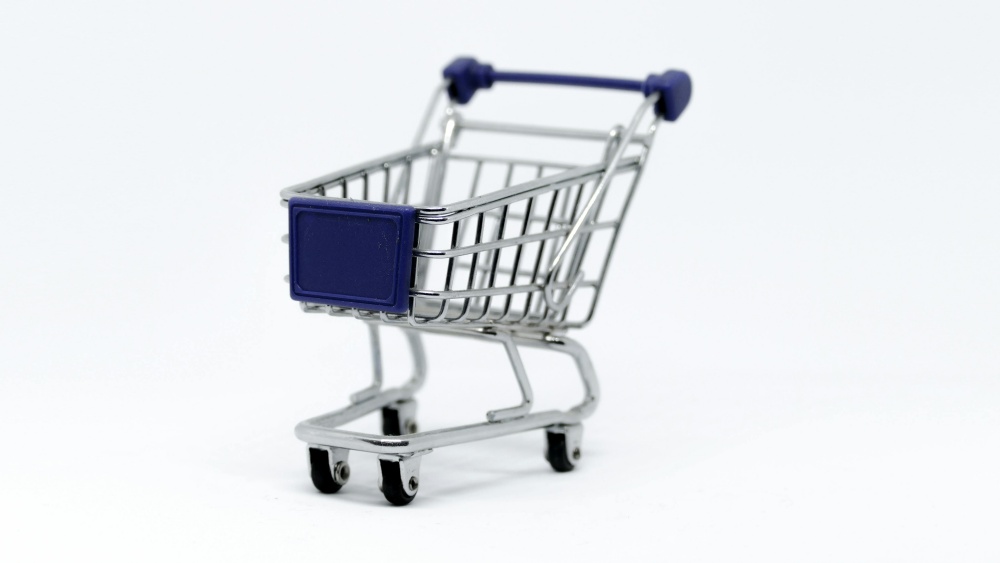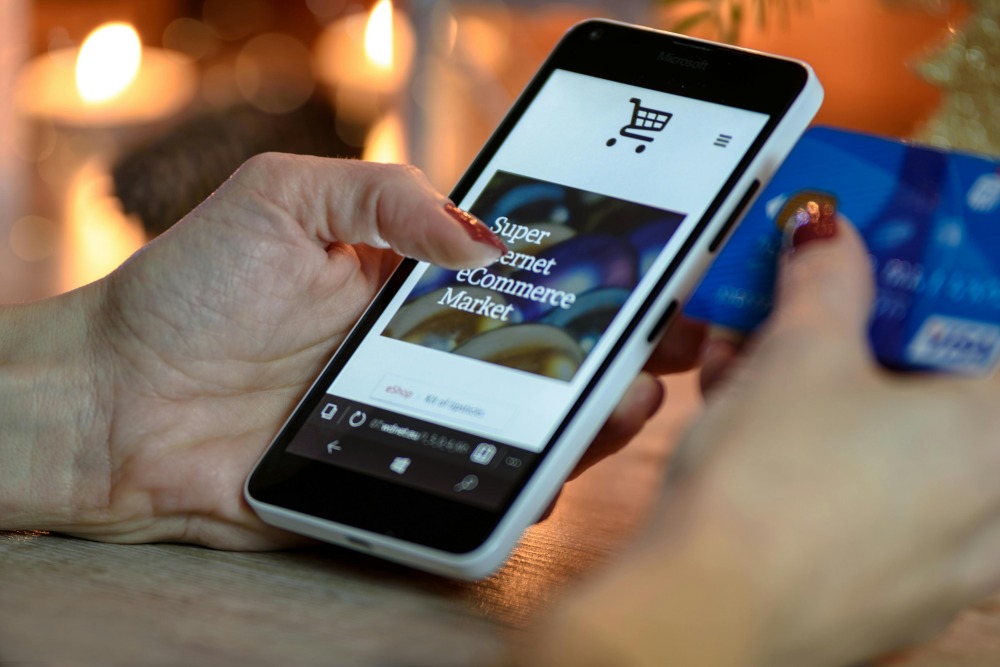The Ultimate Holiday Shopping Season Guide for E-commerce Store Owner
The holiday shopping season is the most important time of the year for any online store. So today, I'm here to use our expertise to help you understand exactly what the holiday shopping season is and why it's so important. Learn how to understand which dates are favorable for your store during the holiday shopping season, how to prepare your store for traffic, and most importantly, how to direct that traffic to your store with a well-planned marketing campaign. By the end of this article, you'll have all the information and tools you need to achieve massive holiday success and generate tons of sales. We'll also give you tips on how to keep that success going beyond the end-of-year shopping frenzy. So let's get started and set yourself up for success.
What is the holiday shopping season
Traditionally, it's considered that the holiday shopping season starts right after Halloween on November 1st and continues throughout the last two months of the year. So, when you're reading up on the holiday shopping season all that data and info mostly refers to November and December in recent years. However, retailers have blurred the lines for the season, a lot of sellers start their promotion earlier and make them last longer. so the holiday shopping season doesn't really have time limitations that are set in stone. The holiday shopping season contains many gift giving occasions people are spending more money than usual on gifts for their friends family and colleagues as well as shopping for themselves. So, as an e-commerce seller this is the time when you can reap the biggest rewards of the year with all those extra people looking for the perfect gift, scouring the internet for deals. your job is to make sure they land on your store and have a wonderful shopping experience that makes them come back again and again even after the holiday season is over. if you're still only thinking about creating an online store this is the rhyme time to do it and see immediate results. it's a chance for you to hit the ground running and start your e-commerce business with PeaPrint.
Seasonal sales events
Black Friday & Cyber Monday
First and foremost, the two days you absolutely need to know about are Black Friday and Cyber Monday. They are the main events of the holiday shopping season that bring in the most sales.
Both of these sales events originated in the US, but in the last few years, they are becoming more and more popular globally as well.
Black Friday
Black Friday is the Friday following Thanksgiving Day in the United States. During this day, many stores offer highly promoted sales, and the physical stores open very early — sometimes as early as midnight.
According to Adobe Analytics, Black Friday 2024 set a new record, with online shopping sales reaching $10.8 billion. Black Friday has been the busiest shopping day of the year for in-person stores in the United States since at least 2005. But the day itself has been part of the retail landscape since the 1950s.
Even though it started as a sales day for brick-and-mortar stores, online shops are now also taking their share from the event.
Cyber Monday
Nevertheless, for online stores, the biggest day to target is Cyber Monday. Cyber Monday is the first Monday after Thanksgiving in the United States. It actually came around as the online answer to the largely brick-and-mortar-owned Black Friday.
Quite often, people who didn't have the time to take part in the sales on Black Friday or simply didn't find the deals they were looking for, turned to the internet to do their shopping the Monday following Black Friday.
This trend started during the early 2000s, and in 2005 the National Retail Federation came up with a name for it — thus, Cyber Monday was created to encourage people to do their shopping online.
Nowadays, Cyber Monday is regarded as an extension of Black Friday. What's more, the online deals usually don't end on Cyber Monday. The rest of the week after that Monday, referred to as Cyber Week, is usually filled with online sales and exclusive deals from e-retailers as well.
Other Fall and Winter Spending Events
Black Friday and Cyber Monday are the main sales days during the holiday shopping season, but remember that there are plenty of other fall and winter spending events you can use to grow your store.
The rest of them, however, are less global than the well-known Black Friday and Cyber Monday, often taking place in a specific market. So as a store owner, you have to understand which days you need to pay attention to.
Diwali – November 4
November 4 marks Diwali, or the Hindu Festival of Lights. It's one of India's most popular holidays, celebrated every fall. It honors the victory of good over evil and light over dark.
In preparation for Diwali, families spend days cleaning and decorating their homes. They also shop for new clothes and accessories to wear during the festival.
Bonfire Night – November 5 (UK)
November 5th in the UK is Bonfire Night.
In 1605, a group of schemers attempted to assassinate King James I. On November 5th, one of them, Guy Fawkes, was arrested. He was keeping an eye on the explosives placed under the House of Lords.
To celebrate the failure of the attempt, people lit bonfires in London. On this day, people still light bonfires and celebrate with fireworks.
As a store owner, you can make their November celebration cozy with some warm custom beanies, throw blankets, or any other product that paints a cozy picture.
Singles Day (Double 11) – November 11
Singles Day, or Double 11, which is marked on November 11th, is a very special day.
It started as a student tradition in China in the mid-90s. On this day, single friends would spend time together eating, going to movies, and shopping.
Singles Day took a commercial turn in 2009 when one of the biggest e-commerce companies in the world, Alibaba, decided to run its first Singles Day sale.
Fast forward to today, Double 11 is China's biggest annual spending event. In 2020, Alibaba Singles Day sales totaled a record $15 billion US, overthrowing any single US shopping holiday including Black Friday and Cyber Monday.
This day is still relatively unexplored in markets apart from China, but sellers in the US and other Western markets are starting to catch up — so this is your chance to get in on the ground floor.
Thanksgiving – Final Thursday of November
Celebrated nationally in the US on the final Thursday of November, Thanksgiving originated as a harvest festival when the first pilgrims shared their food with Native Americans.
On this day, families and friends get together for a meal to give thanks for what they have. This day isn't really about shopping — it's a time to stop for a moment and appreciate what you have.
Many businesses use this day to thank their customers for their loyalty. It's also celebrated in Canada and some other smaller markets but on different dates.
Small Business Saturday
The day after Black Friday is called Small Business Saturday.
Created in 2010 in the middle of the recession by American Express, this day aims to draw attention to small business owners by encouraging customers to support local businesses rather than industry giants.
If you're a small business owner, this day might be a great time to share the story behind your brand or your brand values and beliefs. Running special promotions is one of the ways to target Small Business Saturday too.
Gift-Giving Holidays: End of November and December
End of November and December also host a collection of holidays that often feature gift-giving traditions.
Based on 2020 research, Americans spent an average of $998 on gifts, holiday items, and other expenses during the holiday season. So it's your time to give these gift searchers something they're looking for.
The holidays include Hanukkah, Christmas, Kwanzaa, Boxing Day, and others.
Note that they are celebrated by specific communities and countries, so make sure you understand their cultural significance if you decide to target any of these dates with sales.
Creating a successful holiday marketing campaign
Using your resources wisely
In the following guide, we'll go into detail about how to make sure your online store gets the most out of the holiday shopping season. And the first step is to take stock of your resources.
When talking about resources, the first thing that comes to mind is money.
Of course, money is important, but time is an even more important factor when planning your campaigns for the holiday shopping season.
If you're the only person running all aspects of your online store, you need to take that into account when planning holiday campaigns.
Set realistic expectations on what you can do in the time you have.
Ideally, you should start preparing as early as possible so you have more time to get everything up and running.
Finding Your Niche
The main thing you need to take into account when deciding which sales dates to target and what campaigns to run is your store’s niche.
If you build something for everyone, it will work for no one.
This saying applies to cleaning solutions and flour — but honestly, the same can be said about online stores.
So, you need to specialize, or in other words, find a niche.
A niche is a specialized market that attracts a specific audience.
A niche-oriented business addresses the needs that aren't being addressed by mainstream providers.
It only focuses on a fraction of the market instead.
Targeting Everyone Doesn't Work
You might be wondering:
“Why would I want to target just a small section of the population? Wouldn't I get more sales if I targeted everyone?”
These are valid questions. After all, there are companies like Amazon and Target that are able to sell everything to everyone and still be successful.
These companies, however, are an exception, not the rule.
By targeting everyone, you end up targeting no one. As a result, your sales suffer.
Follow people who buy your product
What truly separates one niche from another is the people who buy these products.
For that reason, approach the niche-searching process with this in mind:
It's not the product or service it's the people who use it that define a niche.
There's a person behind every purchase, so think of your niche as a group of people who have at least one common interest, problem, or need.
Ideally, you should have chosen your niche when starting your store.
If you haven't, don't worry there's still time to adjust.
If you already have some sales, try to understand who are the people buying from you.
Do they have something in common? If yes, then create a campaign around them.
You can adjust the niche as you go. Sometimes, it works better to throw in a wide net and see what you catch.
So don't be afraid to change your direction as you go.
In e-commerce, things constantly change, and nothing is set in stone so feel free to change your direction as well.
Applying Your Niche to Holiday Campaigns
When you've understood your niche, keep it in mind when picking the dates you want to target.
For example, before we talked about the different sales dates during the holiday shopping season, and one of them was National Ugly Christmas Sweater Day.
So if your niche is startup office workers, create a campaign selling sweaters for an office ugly sweater party.
It's easy to get lost in the frenzy of the holiday shopping season not only as a buyer but also as a store owner. Figure out how much you can realistically do and go from there.
Your task before jumping into the next is to find out which sales dates you want to target with your marketing campaigns.
Black Friday and Cyber Monday are must-have dates for everyone, but you can figure out the rest of the dates so they make sense for you and your store.
Crafting Your Holiday Marketing Strategy
The holiday shopping season is a big chance to expand your business, as there will be a lot of extra eyes on your store.
However, in most cases, customers won't just go to your store and buy your products without you putting in some effort.
Sadly, the quote from the movie Field of Dreams — “If you build it, he will come” — is not true in the case of an e-commerce store.
You also need to market your store and your product, and that’s why you need to craft a marketing strategy. So let’s get to it.
Before your task was to figure out which date to target. Now, let's understand what type of campaign or campaigns you want to run for those dates.
Some examples include:
- Percentage or dollar discount
- Free shipping
- Quantity discounts
- Buy one, get one free
- Flash sale
- Giveaway or contest
- Promo code
- Loyal customer discount
- Extra loyalty credit
The Rule of 100
If you're thinking about percentage or dollar value deals, stick to the Rule of 100:
- Use a percentage discount for anything below $100.
- Use a dollar value discount for anything above $100.
This makes the customer perceive the deal's value as higher.
You can also try setting a minimum order amount for receiving a discount, free shipping, or a promo code to increase order value.
Think about your buyer when deciding which deals to offer.
Sometimes, the way you offer it is more important than the deal itself.
So, you can also skip the discount and instead do surprise product drops or offer loyalty rewards.
Choosing Which Products to Promote
Once you’ve made up your mind about the deals, think about the products to put on the pedestal.
Are you going to promote your bestsellers, or will you try to get customers interested in your yet undiscovered treasures?
You can also add holiday-themed products to your store.
Consider these trending products that have their biggest sales during the cold winter months:
If you don't want to create special holiday designs, then reuse existing designs on seasonal products such as hoodies and blankets.
With print on demand, it's very easy to expand your product catalog since it only takes minutes to create a product and add it to your store.
You'll only have to pay if you sell any of the products.
So, you can create a special holiday collection for your customers without any hassle or risk of financial loss.
Choosing the Right Channels for Your Holiday Campaigns
You decided what dates to target and what campaigns to run this holiday season. Now is the time to figure out which channels to use for your holiday campaigns.
Your Store as a Channel
Your online store is your first sales channel. Most sellers use a single platform like Etsy or Shopify, but consider multi-channel selling this season listing your products on multiple platforms to reach more customers. It takes effort but can greatly expand your reach and long-term revenue.
Social Media Highlights
Social media is a must for every online store. Platforms like Facebook, Instagram, Twitter, Pinterest, and TikTok help attract new customers and build trust. Each platform has its own tone and best content types.
Facebook: Share photos, updates, and run contests or giveaways. Join groups where your audience hangs out, but engage genuinely and follow community rules.
Instagram: Focus on visuals. Use Stories for behind-the-scenes moments, countdowns, and user-generated content.
Twitter (X): Show your brand’s personality and voice. Keep posts conversational — not just links.
Pinterest: Great for visuals and inspiration. Create beautiful product pins linked to your store.
TikTok: Perfect for short product videos and reaching younger audiences. Showcase creativity and authenticity.
Building Brand Personality
When creating an account for any of the platforms mentioned above, think about your brand personality. It’s becoming more and more important to have a unique brand voice and engage with your customers and followers on a human level.
It's okay if you start with one or two platforms it takes a lot of time to get the hang of each one.
Don't try to cover all social media channels. Figure out which ones your audience is using and put most of your efforts there. For example, if you're mostly targeting designers, there's a high possibility that Instagram or Pinterest should be your weapon of choice.
Running Paid Ads
If you have a budget, you should also run ads on those social media platforms. Sometimes, a relatively small amount such as $50 can go a long way to broaden your store's reach if you set up the campaigns correctly.
Email Marketing
Don't forget email 72% of adults prefer hearing from brands this way.
Start building a subscriber list or use your existing one.
Plan emails for:
- Announcing offers
- Launching campaigns
- Sending final reminders
Offering discounts for newsletter sign-ups is a great way to grow your list.
Keep Your Store Aligned
As a cherry on top for this part of the content, here's my last tip about channels:
Don't forget that your store is also a marketing channel. Whatever you promote on social media, emails, or even flyers in your neighborhood has to be reflected on your store as well.
Place banners, highlight the products on sale, and make sure your customers get a consistent shopping experience.
Scheduling Your Holiday Campaigns for Maximum Impact
Once your written and visual content is ready, it’s time to put everything into action. Even great content can get lost among countless offers during the holiday rush so timing is crucial.
Schedule your posts for when your audience is most active, instead of posting randomly. The best posting times generally are:
- Facebook: Monday–Wednesday at 12 p.m.
- Twitter (X): Monday–Wednesday at 12–1 p.m.
- Instagram: Tuesday, Thursday, and Friday at 12 p.m.
Keep in mind that these times may vary depending on your specific audience, so always test and adjust. Knowing your audience deeply will help you get the best results.
To build excitement before your campaign launches, create buzz and anticipation share sneak peeks, run countdowns, or offer early access to loyal customers. A little preparation before the big launch can significantly boost engagement and sales.
Last-Minute Holiday Marketing Tips
As you can see, creating a successful holiday marketing campaign takes time the earlier you start, the better. But if it's already November and you're behind, don't panic! Many shoppers also wait until the last minute, so there’s still time to capture their attention.
- Skip creating new designs and instead spotlight your best sellers. These products already resonate with your audience.
- While customers expect deals, "value" doesn't always mean a discount. Try loyalty points, exclusive live streams, or special bonuses. If you're short on time, schedule these events for later to avoid overpromising.
- Once your visuals and promotions are ready, dedicate at least a day to active communication. Reply to questions, thank buyers, and show appreciation for their comments or reviews. Consider going live on social media to show off products or host a short Q&A it builds trust and excitement.
- Before launching, test your checkout process to ensure everything runs smoothly and customers can order in time.
If you can't set up elaborate campaigns, do these quick tasks:
- Stay active on social media. Post product photos, polls, or short videos.
- Send one reminder email to your audience about your products and offers.
Even small actions can make a big difference the key is to stay visible and connect with your customers before the season ends.
Getting Your Store Ready for the Holiday Rush
We focused on marketing but none of it matters if your store isn't ready. All your emails, posts, and videos will lead shoppers to your website, so it must deliver a smooth, reliable experience.
Optimize the Shopping Experience
Online shoppers get distracted easily, so make your store simple and engaging from start to finish. Use tools that help you retain and convert visitors, such as:
- Abandoned cart recovery emails
- Retargeting ads
- Exit popups
- Web push notifications
- Customer loyalty programs
- Coupon codes
- Chatbots
Choose only a few tools at a time to avoid slowing your site down. Set them up early and test thoroughly before traffic peaks.
Run Regular Maintenance on Your Store
Another crucial part of holiday prep is regular store maintenance. A quick checkup now can save you from technical issues and lost sales later. Here’s what to focus on:
Website Speed. A 1-second delay in loading time can cause a 7% drop in conversions. Test your website speed with GTmetrix it should load in under 3 seconds for the best results.
Website Navigation. Well-organized navigation helps customers find what they need quickly. Ask friends or family to browse your store and share feedback on how easy it is to use. Apply their suggestions to improve your layout and usability.
Checkout Experience. Your checkout page is the most important part of your store. Go through the process yourself to ensure it's smooth, fast, and intuitive every extra step risks losing a sale.
Mobile Optimization. With mobile shopping dominating e-commerce, your store must perform flawlessly on phones and tablets. Check the resources tab for an article on making your site more mobile-friendly, and fix any issues immediately.
Store Information and Policies. Make sure all your information is accurate and up to date, including: Product descriptions and care instructions, Privacy, shipping, and return policies, Contact and subscription forms, About Us and FAQ pages.
Don't Forget Holiday Order Deadlines
Nothing frustrates shoppers more than ordering gifts online and not receiving them in time. Late deliveries can leave everyone unhappy the customer, the gift recipient, and you as the seller. The best way to prevent this is by managing customer expectations early.
Order deadlines (also called cut-off dates or order-by dates) indicate when customers should place their orders to ensure delivery before the holidays.
At PeaPrint, these deadlines vary by product type, shipping method, and destination. They're calculated by analyzing past fulfillment data, carrier order-by dates, and PeaPrint's estimated production time. Typically, these dates are announced in October.
It's essential to clearly share order deadlines so customers know when to buy — and so you have a reference if they ask about delivery times. However, not everyone will see your posts or emails, so don't rely on a single channel.
Spread the word across multiple touchpoints, such as:
- Homepage banners
- Product listings (“Order by [date] to get it before Christmas!”)
- Social media posts and stories
- Email newsletters
- A dedicated Holiday FAQ page
In your FAQ, include order-by dates, expected delivery times, and a reminder that shipping may take longer during the busy season.
Remember, you're not the only business with deadlines. Create urgency by encouraging customers to shop early for example, by promoting limited-time discounts or free shipping before the cut-off dates.
Succeeding Beyond the Holiday Season
How to maintain success after the holiday rush? Let's imagine the holidays are over. You've made sales, gained new customers now it's time to turn those one-time buyers into loyal fans. While not every brand can be the next Apple, any brand can become irreplaceable by putting customers first.
Reward Loyalty
Everyone loves rewards it's human nature. Use that to your advantage with loyalty or rewards programs that encourage repeat purchases. U.S. shoppers especially appreciate programs that offer instant benefits like discounts, free products, or redeemable points.
Avoid making rewards hard to earn let customers see real value right away. For example, offer a discount on their next order or points for signing up with their email. You can even add gamification for fun: "spin the wheel" or "pick a box" games are engaging ways to bring customers back.
Keep Communicating
Stay in touch with your customers regularly communication builds trust and keeps your brand top of mind. Track results on each platform to see which methods work best for your audience.
Emails: Send occasional updates, reminders, or even birthday greetings with a small gift or discount.
Social media: Respond to comments, thank customers for mentions, and engage through contests or giveaways. A strong social media presence helps attract new fans and keeps existing ones connected.
Keep Things Fresh
Keep your store exciting by adding new products, colors, and designs regularly. New items give you fresh content to share on social media and reasons for customers to revisit your store.
If shoppers see the same products every time, they'll lose interest. But with constant updates and creative posts, they'll check back often to see what's new. Avoid reposting the same content repeatedly originality keeps your followers engaged.
FAQs
When is Black Friday 2025?
Black Friday 2025 falls on November 28, 2025 — the day after Thanksgiving in the United States. It marks the official start of the holiday shopping season, when retailers offer massive discounts both online and in stores.
When is Cyber Monday 2025?
Cyber Monday 2025 will take place on December 1, 2025. It's the Monday following Black Friday and focuses mainly on online shopping deals, especially for tech, electronics, and digital products.
When does the holiday shopping season start?
The holiday shopping season usually begins in late October or early November and runs through December 24th. Key dates include Black Friday, Cyber Monday, Small Business Saturday, and other seasonal events.
Conclusion
The holiday shopping season is a golden opportunity for e-commerce store owners to maximize sales, attract new customers, and strengthen brand loyalty. By preparing early, choosing the right campaigns, and keeping your store optimized, you can stand out in the busiest time of the year. Remember, success doesn't end when the holidays are over — use this momentum to build lasting customer relationships and keep your business thriving all year long.




